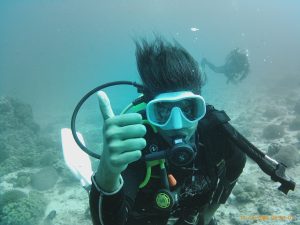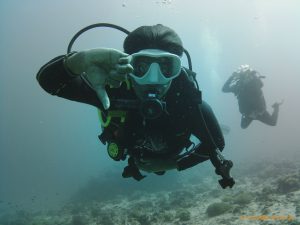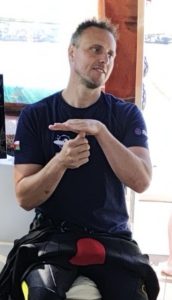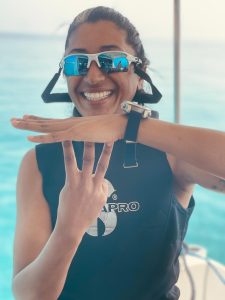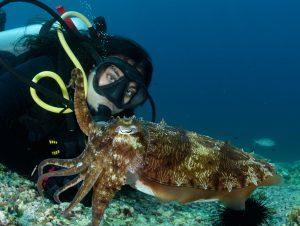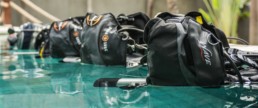Hands Signals to know when scuba diving
Ask any diver what they enjoy about scuba diving. Most will describe the absolute peace and tranquility of being at depth. Some will discuss the intense pleasure of not having to speak to anyone. So… how do you communicate with your buddies, dive master and other divers during a dive? Hand signals are the most common form of underwater communication. Let’s take a look at some of the most important ones to know.
OK / Are you okay?
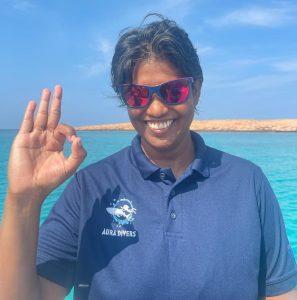
The OK signal is the most important signal when it comes to diving. The ok is both a question and an answer. Join the thumb and index fingers while extending your third, fourth and fifth finger. The thumbs up signal indicates to go upwards or the end of a dive.
There's a problem
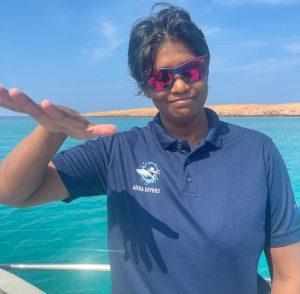
Have your palm flat and slowly move your hand from side to side, followed by where the problem is. Whether it's equalizing, your weight belt or something else, pointing out where the problem is will help your dive master, instructor or buddy to know what the issue is.
OK and problem at the surface
An OK at the surface is done by joining your hands above your head and can be used to signal the boat or lookout that you’re doing OK. This can also be done using one hand depending how far you are from the boat or shore. A problem at the surface is signaled by waving both hands and yelling ‘help.’
Thumbs up or down
Thumbs up can signal to ascend or the end of a dive. When you see this signal, you should also signal thumbs up to show that you’ve understood it’s time to ascend. A thumbs down is used to signal that the diver should descend.
Look at me or look over there
A scuba instructor will point at their eyes then at themselves to show students that they should look at what they’re about to demonstrate. A dive master during a fun dive may point at their eyes then in a direction to show that people should look in that direction.
Level off or stay at my level
Used to tell other divers to maintain their depth. It’s commonly used when you’ve reached your planned maximum depth or to tell divers to hold their depth for safety reasons. Extend your palm and move it slowly from side to side horizontally.
Buddy up
If you’re too far from your buddy, you may be asked to buddy up. This is done by using both index fingers and placing them close together.
Safety stop
A three minute safety stop at five meters is demonstrated by a flat open hand with your other hand below it indicating three. This means that divers should level off and start their safety stop.
Decompression
The deco signal can be done by either raising a pinky or raising a pinky and thumb. This signal is used in the event that a diver has passed their no-decompression limit and to communicate the need for an extra safety stop.
Low on air
Once you’ve reached 50 bar or go into the red on your gauge, you should signal to all other divers that you are low on air. This is done by placing a fist in front of your chest.
Out of air
 In the unlikely event that you run out of air during a dive and other buddies are close by. You can signal you have run out of air by moving a flat hand across your throat which indicates your air supply has been cut off. Your buddy should then give you their alternate and you can start to ascend.
In the unlikely event that you run out of air during a dive and other buddies are close by. You can signal you have run out of air by moving a flat hand across your throat which indicates your air supply has been cut off. Your buddy should then give you their alternate and you can start to ascend.
How much air do you have?
Your dive master and buddies may ask you how much air you have during a dive so you can adjust your dive depending on how much air the group has left. This is done by placing your index and middle finger into the palm of your other hand and tapping. To signal half a tank, form a time-out with your hands, 50 bar is done with a closed fist. Each additional 10 bar is indicated with the fingers on your other hand.
Stop/hold
You may be asked to stop or hold a position. To indicate this, hold a flat hand pointing forward or hold your forearm up and make a closed fist.
Come here
An open hand and moving your fingers towards yourself in a beckoning motion is used to signal to other divers to come here.
Now we've taken a look at some of the most popular underwater hand signals. What's your favourite one to use during a dive?
5 Tips for New Divers
Learning how to dive is one of the most exhilarating feelings in the world. Once you’ve completed your Open Water Course, what’s next? Let’s take a look at some of the best tips for new divers.
Practice, Practice, Practice
Have you ever heard of the statement: “practice makes perfect?” When it comes to diving, this is very much the case. The more time you spend in the water, the more time you have to develop your skills. Working on your buoyancy, kicking technique and air consumption becomes easier the more time you spend in the water. Practicing the skills, you learn during your course will help keep them fresh in your mind. Find a buddy or dive club and take some time during a dive or between dives to work on your skills. Try not to leave it too long between doing the course and getting yourself in the water.
Buy a Mask and Fins 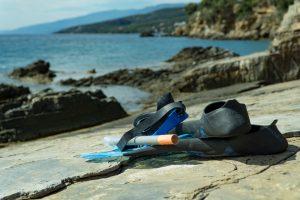
A properly fitted mask and a set of fins that do not give you blisters are the difference between a good dive and a dive you would rather forget. A mask that does not leak or fog will help you be able to see the wonderful marine life while diving. Comfortable fins will help you keep up with the rest of the group and not let you get tired. As you progress, you can start buying all the other types of dive equipment. If you’re considering buying a mask and fins, get in contact with us at Aura Divers, we’ll be happy to provide you with guidance and advice about different diving equipment and where to purchase it in Muscat, Oman.
Drink Water
Staying hydrated while diving is incredibly important. It can decrease your chances of getting decompression sickness. Drinking electrolytes is a fast and easy way to replenish after a dive. Be sure to drink water, before and after the dive, even at the end of the day. Keep drinking water!
Learn how to control your buoyancy
So, you’ve done your Open Water Course but still tend to swim with your arms or rise up and down? Having good buoyancy is not about constantly inflating and deflating your BCD. Mastering your breath will automatically help you with your buoyancy. Being properly weighted and reacting to changes in depth are important. Using the dump valves on your BCD will help keep you horizontal while letting air out of your BCD. Learn from other divers and your future dive guides. In addition, observe how they position themselves in the water and swim, find a role model and try to copy what they do.
Develop your Buddy Skills 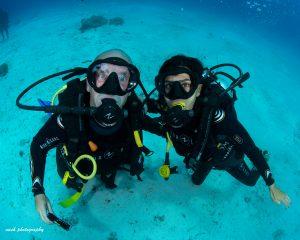
Becoming a good dive buddy takes time. Learning how and when to interact with your buddy is important. Staying close during the dive and communicating with your buddy is vital. Be aware of your surroundings and watch out for your dive buddy in case they do need your house. If your buddy needs assistance or you can see something that may turn into a problem, you have the ability to help them and reduce the risks. Check on their air consumption and make sure you’re diving within your limits. Understanding your buddy’s limits can help you adjust the dive plan.
Becoming a good diver takes time and practice. Actively trying to become a better diver is important. With more time in the water, things that were once daunting become much easier. Remember to keep learning and developing your skills as a diver. Consider taking further courses like the PADI Advanced Open Water course or a specialty like Peak Control Buoyancy or the Deep Diver course.
Contact us at Aura Divers if you want to learn more tips to become a better diver or about diving in Oman
6 Steps If Separated From Your Dive Buddy
Your dive buddy is your lifeline underwater. They can me a second set of eyes and support if anything goes wrong. But there are occasions where you might lose sight of each other. Say if you get separated during a dive with low visibility, or if you are focused on your compass only to look up and realize that your buddy swam in the other direction.
What should you do if you’re separated from your diving buddies?
1- Establish a lost-buddy pre-dive plan.
Remember to always make a lost-buddy plan part of your pre-dive check, especially when diving with a new buddy or a stranger. Agree on how long you’ll search for each other underwater (usually one minute) and then agree to end the dive (after making your safety stop) and reuniting on the surface.
Remember to arm you and your buddy’s buoyancy compensater (BCD) with the essential emergency gear like SMB and whistle.
2- Stop and slowly turn 360 °
As soon as you notice that you cannot see your dive buddy, stop where you are, establish neutral buoyancy, and do a slow visual 360° spin. Also look both upwards and downwards to check whether they have ascended or descended. Try spotting your buddy’s bubbles, if possible.
3- Use a signaling device
Use your tank-banger or another audio signaling device to get your buddy’s attention. He or she may be able to locate you by following the direction of the sound.
If you have a dive light on you and visibility is low, use the light while doing your slow spin. The light can be used to grab the attention of your buddy who could be behind any underwater features like big rocks.
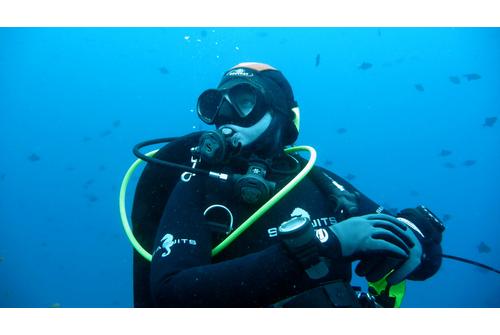 4- Start Ascent
4- Start Ascent
After the agreed time (around 1 minute), start your ascent while repeating the 1-minute turn with noise and light at every safety stop
5- Deploy your delayed surface marker buoy (DSMB)
While at your safety stop, deploy your delayed surface marker buoy (DSMB) or so that your buddy can easily spot you if he is searching for you at the surface.
If you’re doing a boat dive this will also aid the boat crew in locating you.

6- Wait at the surface
At the surface, wait for your buddy to emerge while continuing to look for the air bubbles or DSMB. If the weather is good chances are you will be able to spot them. However if your buddy is taking too long to surface do not re-descend, instead inform the boat crew or dive center as soon as possible that your buddy is missing.
5 Tips for open water divers
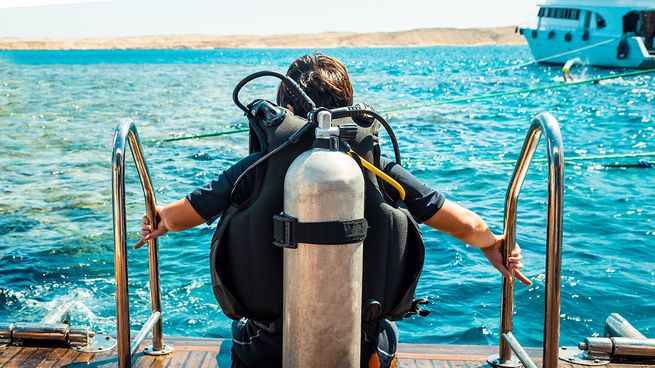
Embarking on your scuba diving journey can be exciting and daunting at the same time. By watching hundreds of people begin their Open water adventure and emerge from their first dive barely containing their excitement, I can hopefully give you some tips to make the most out of this experience and pass with flying colours.





